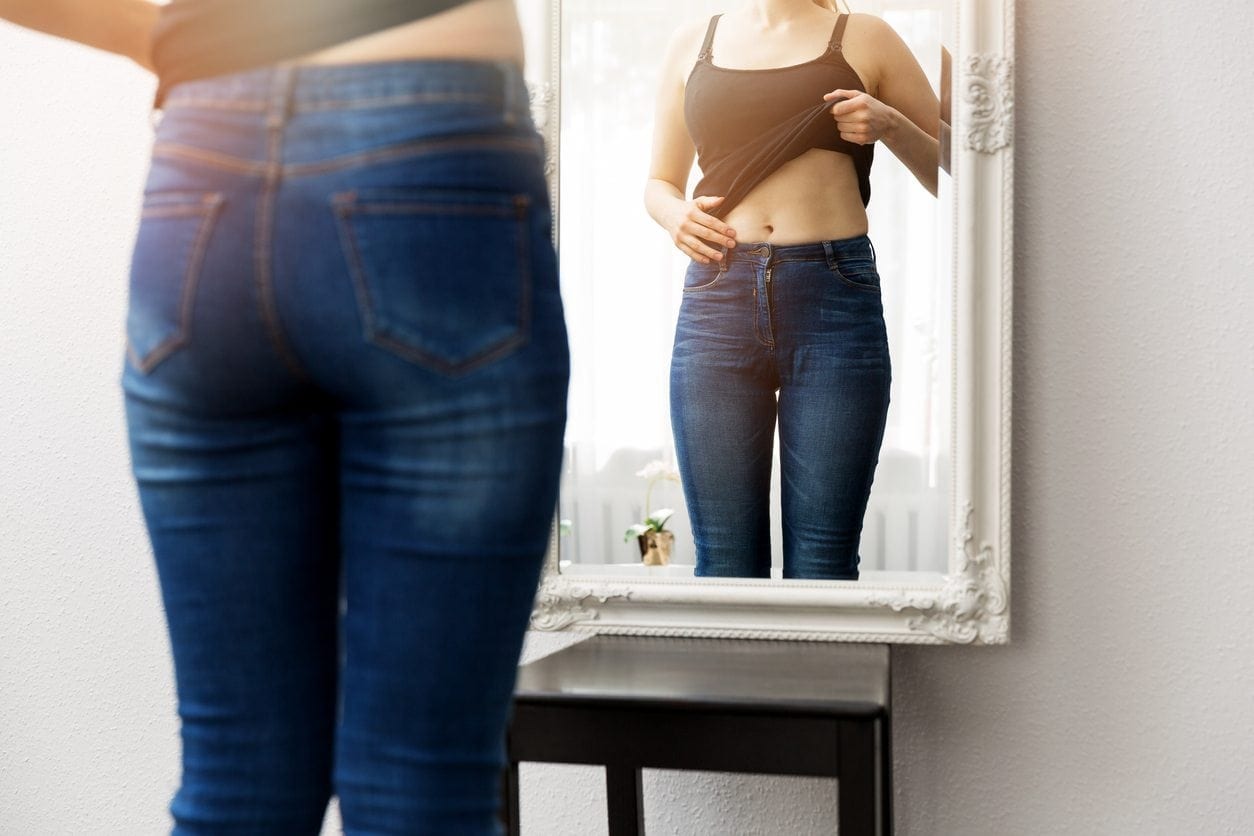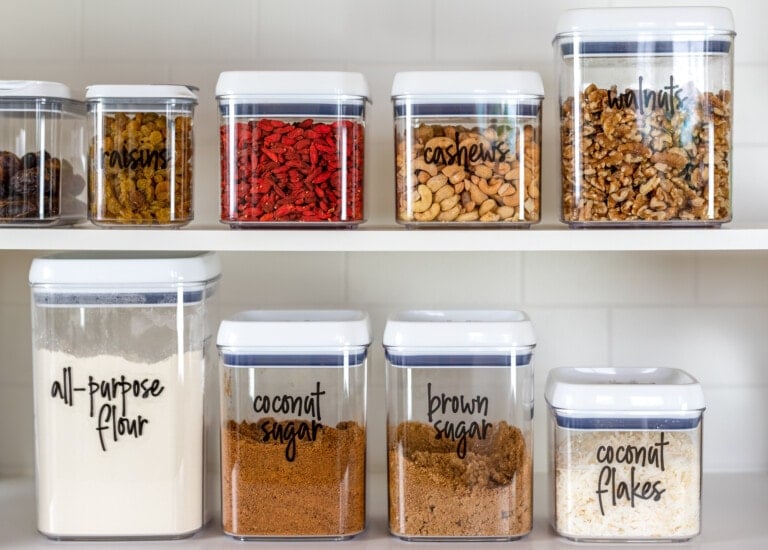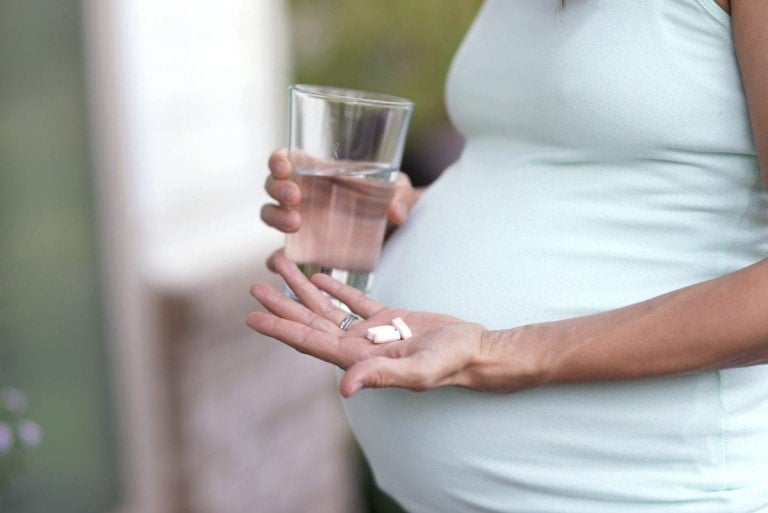If PMS leaves you feeling like you want to eat chocolate, ice cream, and pizza while lying on the couch for a week, you’re not alone. The truth is that for many women, the weight and mood changes caused by their menstrual cycle can be significant.1 Let’s explore how your menstrual cycle and weight loss are connected.
Common Symptoms of PMS
The symptoms of premenstrual syndrome, or PMS, vary by individual and can range from a slight inconvenience to feeling like PMS is taking over your life.2 Here are some common PMS symptoms that you may experience:1,2,3,4
- Water retention and bloating
- Cramping
- Irritability
- Increased cravings
- Appetite changes
- Decreased energy levels
- Tender breasts
- Anxiety or depression
- Insomnia
- Decreased sex drive
- Acne and breakouts
Phases of the Menstrual Cycle
Fluctuating hormones affect and control your menstrual cycle. A woman’s menstrual cycle consists of the following four phases:5,6
- Menses phase: This starts on the first day of your period and lasts about three to seven days. Your uterus sheds its lining, and you experience bleeding from your vagina.
- Follicular phase: This phase also starts on the first day of your period. It lasts about 10-14 days.
- Ovulation: This occurs about once a month and involves your ovary releasing its matured egg.
- Luteal phase: This phase starts right after ovulation and ends with your period. It lasts about 14 days, and the dominant hormone is progesterone, which the corpus luteum produces. The goal of this phase is to prepare your uterus for pregnancy and implantation. If your egg isn’t fertilized, you’ll shed your uterine lining and get your period.22
Weight Loss and Your Menstrual Cycle
It can be challenging to manage your weight during your menstrual cycle. The good news is that by making a few minor tweaks to your training and nutrition, you can easily outsmart cravings and get a handle on this time of the month with your weight loss goals. Here are several important factors to consider:
1. Increased Weight Gain From Water
Bloating can be a significant issue for women. Some women report gaining as much as five to 10 extra pounds of water during their cycle.7 This jump on the scale is NOT fat. It’s simply excess water retention that fluctuations of hormones, progesterone, and estrogen cause.8 Estrogen directly stimulates several compounds called renin-angiotensin from the kidneys, leading to fluid retention.9
Weight gain from water retention can also occur from women taking birth control pills, and this is from the effects of estrogen.23 Overall, the doses of estrogen (in the form of ethinyl estradiol) in current birth control pills are low, especially compared to the higher doses from a few decades ago.24 Oral contraceptives that contain around 20 micrograms of estrogen are recommended for women who want to avoid fluid retention.25 If you’re on birth control pills with a high estrogen level, talk to your doctor about moving to something with lower estrogen levels. Other ideas for reducing water retention include limiting salty foods.10
2. BCAAs for Cravings and Cortisol
Another secret weapon for addressing brain chemistry changes is branched-chain amino acids (BCAAs). BCAAs help minimize muscle breakdown, lower cortisol, and boost the brain chemicals gamma-aminobutyric acid (or GABA, our brain’s number one relaxing chemical) and glutamate.11,12 By balancing these stimulating and relaxing responses in the brain at a chemical level, we can stop cravings before they even start. BCAAs also help control hunger.13
3. Boost Serotonin and Dopamine
Be prepared for cravings to increase during the time of PMS.1 To deal with the intense cravings you may experience, cocoa can be helpful. Cocoa and chocolate have been shown to raise dopamine and serotonin levels in the brain, so they can help blunt cravings at a brain chemistry level.14
4. Cortisol Impact and Stress Reduction
In addition to impacting insulin, both estrogen and progesterone impact cortisol. They’re both anti-stress hormones, so circulating cortisol levels tend to rise during the follicular and luteal phases of the menstrual cycle.15 This means stress-reducing activities (such as leisurely walking, foam rolling, yoga, stretching, and sleep) are critical to keeping hormones as balanced as possible.16
5. High-Stress Endurance Exercise
Long-duration, moderate-intensity cardio is a stressful form of exercise that directly impacts cortisol.17 I don’t encourage this type of endurance exercise for optimal body composition. However, if you’re training for an endurance event and need to fit in long-duration, moderate-intensity cardio into your routine, this type of exercise would fit better into the follicular phase or the beginning luteal phase.18 This is when levels are higher, and cortisol levels are better balanced.15
6. Insulin Impact and When To Drop Carbs
Because estrogen and progesterone impact insulin, it’s important to understand and balance the impact of insulin on body composition.19 This can be done by manipulating carbohydrates during specific times of the month. Estrogen makes women more insulin-sensitive, so most can get away with eating more carbs during the follicular phase. Normal carbohydrate intake at most meals is ideal, with carbs coming after exercise to enhance muscle growth and recovery.26 Generally, women seem less tolerant of increased carbs during the luteal phase, especially the late luteal phase (aka PMS time frame). So, if you’re tracking carbs, it may be beneficial to go lower in carbohydrates during the late luteal phase.
7. More Muscle Building
Studies show that the follicular phase may be the best time to focus on muscle building.20,21 Due to the high cortisol levels during the luteal phase, the body naturally tends to be more catabolic (muscle breakdown mode).15 The follicular phase is a naturally more anabolic (muscle-building) time, so make sure you’re using heavy weights and challenging your muscles to grow. Full body weight training with heavy weights is critical.
By clearly understanding the changes and processes occurring within your body, you may help reduce the chances of them impacting weight loss during your menstrual cycle. We hope the tips and information in this article allow you to effectively manage your nutrition, exercise, and weight loss during PMS.

































